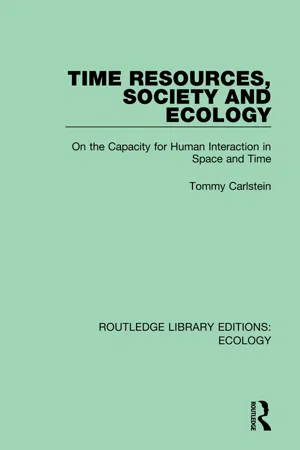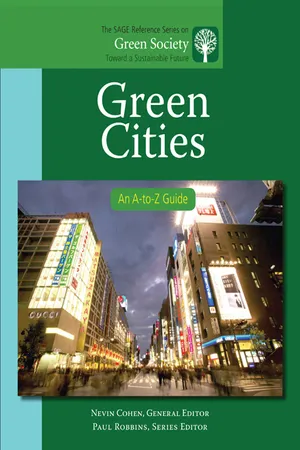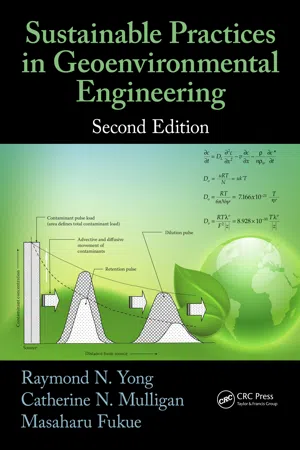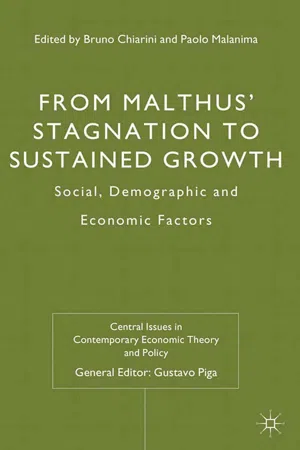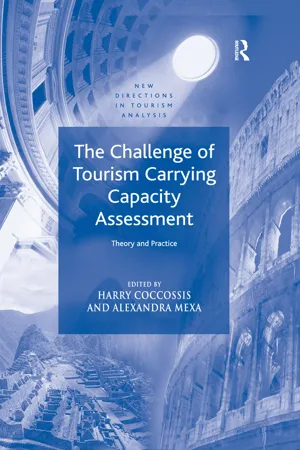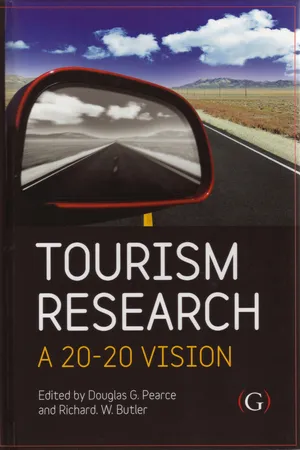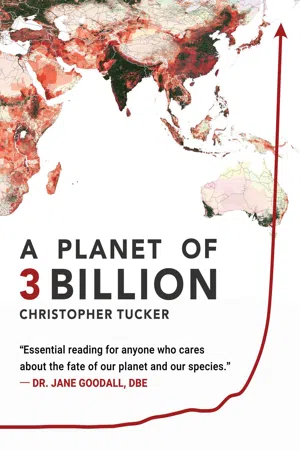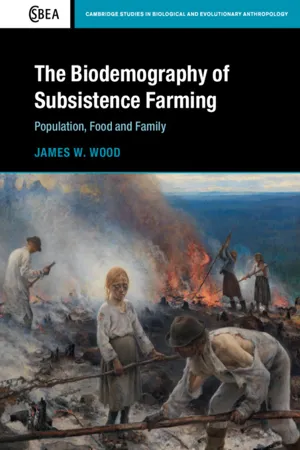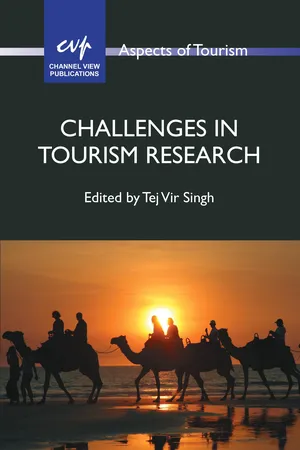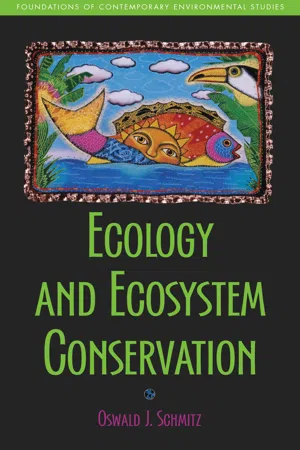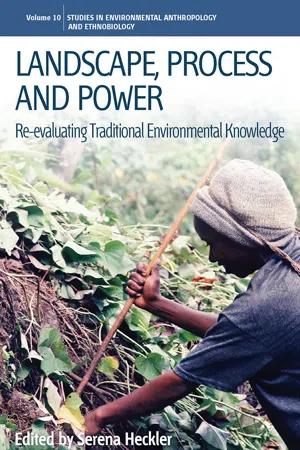Geography
Carrying Capacity
Carrying capacity refers to the maximum population size that an environment can sustainably support without degrading the environment. It is influenced by factors such as food availability, water supply, and space. Understanding carrying capacity is crucial for managing resources and planning sustainable development in geographical areas.
Written by Perlego with AI-assistance
Related key terms
1 of 5
12 Key excerpts on "Carrying Capacity"
- eBook - PDF
Surface Modeling
High Accuracy and High Speed Methods
- Tian-Xiang Yue(Author)
- 2011(Publication Date)
- CRC Press(Publisher)
293 11 Surface Modeling of Human Carrying Capacity* 11.1 Introduction 11.1.1 Definitions of Carrying Capacity Discussions about Carrying Capacity can be traced back to Malthus’ treatise on human population growth which is based on the assumption that human population increases exponentially and that food is the sole limiting factor on its growth (Malthus, 1789). Although Multhus’ theory has been criticized, his treatise, due to its great influence on Darwin’s concept of natural selec-tion and its part in developing the incipient science of human demography, provides a solid basis for the concept of Carrying Capacity (Seidl and Tisdell, 1999; Price, 1999). Many definitions of Carrying Capacity, based on different aims and various conditions, have been proposed. In 1922, based on observing the effects of the introduction of populations of reindeer in Alaska, Carrying Capacity was defined as the number of stock that a range can support, without injuring that range (Hawden and Palmer, 1922). As a planning tool, Carrying Capacity is defined as the ability of a natural or artificial system to support the demands of various uses. It subsequently refers to inherent limits in the systems beyond which instability, degradation, or irreversible damage occurs (Godschalk and Park, 1975). In tourism, Carrying Capacity is defined as the maximum number of visitors that can be tolerated without unacceptable deterioration of the physical environment and without considerably diminishing user satisfaction (Mathieson and Wall, 1982). Human Carrying Capacity (HCC) is defined as the maximum level of exploitation of a renewable resource, impos-ing limits on a specific type of land-use, which can be sustained without causing irreversible land degradation within a given area (Kessler, 1994). Human carrying capacities are contingent on technology, preferences, and structures of production and consumption (Arrow et al., 1995). - eBook - ePub
Time Resources, Society and Ecology
On the Capacity for Human Interaction in Space and Time
- Tommy Carlstein(Author)
- 2019(Publication Date)
- Routledge(Publisher)
The substantive links between biocnergetics and land-cum-population dynamics are quite clear. Carrying Capacity is a central concept in the ecology of population dynamics, as it describes some of the possible and impossible relations between a population and its habitat. More specifically, it denotes the maximum population number which can in terms of food (energy) be supported in a region of given size and quality (e.g. varying quality of land). It is often measured in terms of aggregate population density per unit of space.When measuring Carrying Capacity, land is usually assessed simply in terms of spatial area, but in a strict sense this is only appropriate for vegetation, where there is a close correlation between catchment area and solar energy influx (given other variables such as moisture and differences in soil quality). The gross solar inflow in megawatt-hours per square kilometer and year, for example, is only an ultimate limiting factor for vegetative biomass production. It is only when the food-web structure of autotrophic and heterotrophic species in the area is specified, that the Carrying Capacity of land for the human population can be determined.In practice, what is often done is that Carrying Capacity is assessed in simple population density terms under a good many ceteris paribus assumptions with respect to bioenergetics. Land may be classified according to known empirical population densities in similar regions, and areas where production can be intensified under certain conditions can be identified in a similar fashion.In the present study, when classifying societies and ecotechnologies according to population density, we are simply considering the fact that hunting-gathering and nomadic pastoralism are empirically associated with low regional population densities, shifting cultivation with higher densities, and cultivators with more fixed forms of cultivation with yet higher densities. Still, both the latter fall within the medium density range compared to societies with hydraulic agriculture. The real high densities or even hyper densities are found in urban-industrial societies, at least locally for city habitats. But since cities are supported by broad and often overlapping hinterlands, the local densities of cities do not reflect local carrying capacities of land in the conventional sense. Imports to cities may come from very distant places and cover all sorts of commodities, not just food. The concept of Carrying Capacity proposed further on is a more general but different notion which also applies to cities. - eBook - PDF
Green Cities
An A-to-Z Guide
- Nevin Cohen(Author)
- 2010(Publication Date)
- SAGE Publications, Inc(Publisher)
Judith Otto Framingham State College C ARRYING C APACITY Carrying Capacity was first described by ecologists in the context of natural ecosystem functioning, but has since been expanded for use in more human-centered applications. Here, the traditional, ecologically focused notion of Carrying Capacity is described first; then the many parallels between natural and human-made systems, as well as our funda-mental dependence on the Earth’s ecosystems, are described in detail. Because it has the potential to function as a policy decision–making aide, the differences between the tenets 61 Carrying Capacity of Carrying Capacity and those of traditional neoclassical economic theory are also reviewed. The ways in which the concept of Carrying Capacity can be interpreted for the purpose of gauging the overall sustainability of people’s actions and settlement patterns will also be examined. Against the framework created using the concepts described here, particular attention is paid to the sustainability of cities, as determined using purely eco-nomic, versus essentially ecological metrics. Although one of many common settlement patterns, cities are of particular interest with regard to sustainability, as they are both the world’s economic engines and loci of its most intensive resource use. Ecological Carrying Capacity The concept of Carrying Capacity originated within the field of ecology, where it is often defined in terms of the population of a species that can be maintained by a given habitat indefinitely without causing irreparable harm to the supporting ecosystem. In the course of its life cycle, each organism present within a given habitat makes demands of the system through the extraction of nutrients and production of wastes; and in so doing, the presence of one species affects other elements of the system. One organ-ism’s hunting behaviors, for example, will impact the population levels of prey species. - No longer available |Learn more
- Raymond N. Yong, Catherine N. Mulligan, Masaharu Fukue(Authors)
- 2014(Publication Date)
- CRC Press(Publisher)
We define the Carrying Capacity of the geoenvironment as the ability of the geoenvironment to indefinitely sustain the popu-lation at hand (or a growing population) with its naturally derived resources. Although some degree of human intervention is required to capitalize on these natural resources, e.g., agriculture, forest management, breeding, hydro-power generation, it must be understood that the basic natural resource being exploited is the factor that enters into the calculation of the Carrying Capacity of the geoenvironment. Humans depend on the ecosphere, and in particular on the geoenvironment, to provide the basic materials to support life. Because of the many threats and adverse impacts on the various life-support systems within the geoenvironment, there is pressing need for one to (a) develop a better appreciation of the stresses imposed on the geoenvironment by humankind and (b) determine and implement the requirements for sensible and proper management of our geoenvironmental resources to meet the goals of a sustainable society. Many of the terms used in this book will have slightly different meanings depending on one’s background, perspective, and scientific–engineering discipline. It would be useful, at the outset, to establish what we mean by the term geoenvironment . The geoenvironment 2 Sustainable Practices in Geoenvironmental Engineering is a significant part of the ecosphere. Figure 1.1 shows the various components of the eco-sphere and their relationship to the geoenvironment. The ecosphere shown in the Venn diagram in Figure 1.1 consists of the (a) atmosphere, (b) geosphere, which is also known as the lithosphere, (c) hydrosphere, (d) biosphere, and (e) anthrosphere. The various elements contributing to the attributes and features of the geoenvironment will be discussed in Section 1.2. - eBook - PDF
From Malthus' Stagnation to Sustained Growth
Social, Demographic and Economic Factors
- Bruno Chiarini, Paolo Malanima, Gustavo Piga(Authors)
- 2012(Publication Date)
- Palgrave Macmillan(Publisher)
Population, Earth Carrying Capacity and Economic Growth 145 2. - Population Growth and Earth’s Carrying Capacity The Carrying Capacity of an ecosystem for a living species is normally defined as the maximum number of individuals which the ecosystem can support by means of the resources it generates for them. Indeed, it is a very “Malthusian” concept, even though Malthus never used it explicitly. Malthus recognised geometric progression as the natural trend of human population growth when it is not braked by land fertility, that is the power of land to generate subsistence for human beings (Malthus, 1970). This concept of “subsistence” is really strictly connected with that of Carrying Capacity used in modern ecological sciences, because it is related to all the resources necessary for the survival of a given human population. Without technological progress, in Malthus’ analysis there is a limit to the human population level determined by the land productivity or, in a more general sense, by the potential flow of goods and services produced by the ecosystem in each period of time. Human beings can increase the land product by means of their labour, but only with decreasing returns (Malthus, 1970). When the population grows, the product does not grow proportionally, so that per capita incomes decrease, cutting down the birthrate and raising the death rate until the growth rate falls to zero. Even though not formalised, the original Malthusian model had a more complex dynamics than its successive mathematical “vulgate”. Today, Malthus’s original intuition is always formalised by means of the fol- lowing differential equation: (1) where: N(t) is the number of human individuals at time t; b is birthrate; d is death rate; n is population growth rate; Thus, the time path of population is an exponential function, as follows: (2) - eBook - ePub
The Challenge of Tourism Carrying Capacity Assessment
Theory and Practice
- Harry Coccossis, Alexandra Mexa(Authors)
- 2017(Publication Date)
- Routledge(Publisher)
Several writers in the 1960s and 1970s warned that human population growth and the accelerating rate of economic growth stressed the natural ecosystem beyond its ability to absorb such stresses. Most prominent among these were Boulding (1966) with his 'spaceship earth' metaphor and Meadows et al. (1972) with the 'limits to growth' thesis. Well known contemporary scientists insist that we are reaching if not already exceeding the limits of global and local ecosystems (Arrow et al., 1995; Costanza et al., 1997).Implicit in most of these perspectives is a notion of Carrying Capacity or sustained yield as the basic criterion of sustainability. Ecosystems and populations, it is assumed, have a limited capacity to cope with environmental stress (Rees, 1990). An ecosystem is thought of as being able to absorb up to a certain amount of pollution and a renewable resource as capable of providing a maximum yield above which additional harvest begins to deplete it ('sustained yield'). Above a certain amount of stress from human activity there are catastrophic consequences and the ecosystem cannot continue to function and provide its services. For example, there are maximum admissible pollutant levels for the global atmosphere or a river, and maximum yields that a stock of fisheries or a water resource can sustain. From this perspective, sustainability of a given geographic area is equated with sustainability of the ecosystem that supports it. Ortolano (1984) for example, defines Carrying Capacity as 'the growth limits an area can accommodate without violating environmental capacity goals'.The strategies for attaining it relate to policies for constraining the scale (intensity) of human activities within such limits. Proponents of this 'limits-based' strategy stress the importance of regulations on human activities to stop unlimited or excess use of environmental goods and services and to reduce negative environmental impacts (Rees, 1990). Related policies include, among others, limits to population and controls on its spatial distribution, standards for the protection of species, ambient standards, maximum acceptable levels of pollutant emissions, limits on the use of renewable resources and enforcement of resource-saving technologies. Policies for controlling the flow or number of visitors or limiting the number of beds allowed in tourist destinations pertain to this logic. - eBook - PDF
Tourism Research
A 20:20 vision
- Douglas Pearce, Richard Butler, Douglas Pearce, Richard Butler(Authors)
- 2010(Publication Date)
- Goodfellow Publishers(Publisher)
This chapter con-tinues with a brief review of the concept of Carrying Capacity and discusses its initial application in recreation and tourism. It then considers the reasons why the concept has declined as a focus of research interest and the implications of this decline. The chapter concludes with a short discussion on what that might involve for tourism in the future. Carrying Capacity: definition and origins Carrying Capacity is inextricably linked to limits, normally limits on resource ex-ploitation, which may take a variety of forms, including numbers, volumes, interac-tions relating to negative impacts. The concept is age-old, as noted in an anonymous poem from the sixteenth century: But now the sport is marred, And wot ye why? Fishes decrease, For fishers multiply. (Anon, 1598) While today that lament may apply with more force to commercial than recreation-al fish stocks, it reflects well the basic premise of the concept, namely, that overuse (over extraction, over pollution) of a resource beyond its natural ability to recover will result in diminishing returns and perhaps ultimately the disappearance of that resource. Most of the best examples of use at levels beyond the Carrying Capacity of the resource relate to wildlife consumption, including the extinction of the dodo, the carrier pigeon and almost the North American bison, all resources thought to be inexhaustible and hunted beyond their natural recovery levels. Ignorance over the level and quantity of resources can explain those examples, but other forces also affect the level of use. Perhaps the most significant of these is the placing of individual benefit ahead of the well being of the community to which the individual belongs. This behaviour has been well described by Hardin (1968) in his now classic paper ‘The tragedy of 5: Carrying Capacity in tourism 55 the commons’, and applied to tourism by Healy (1994) and Briassoulis (2002). - eBook - ePub
A Planet of 3 Billion
Mapping Humanity's Long History of Ecological Destruction and Finding Our Way to a Resilient Future | A Global Citizen's Guide to Saving the Planet
- Christopher Kevin Tucker(Author)
- 2019(Publication Date)
- Atlas Observatory Press(Publisher)
Chapter 8 How to Calculate Earth’s Maximum Carrying CapacityTo be blunt, humanity’s recurring and accumulated wastes—by themselves—are on track to squeeze out the ecological resources required to support our species over the course of this century. Our industrialization of Planet Earth not only has eliminated a certain portion of the ecological Carrying Capacity of the planet. Our mode of industrialization also is designed (if inadvertently) to regularly and reliably generate increasingly more wastes proportionate to the size of the population that inhabits this landscape.Modern industrialized humanity does not live in the understory of forest wildernesses or live in sustainable ecological partnership within various other ecosystems. Modern industrialized humans remove these ecosystem resources, and actively machine and tool the geographies that we inhabit and cultivate, in which we recreate, and across which we transport people and goods. We do so to meet our needs, which include ensuring that nature is prevented from reclaiming its historical ecological boundaries. A future population of any more than 3 billion humans would continue to accrue additional ecological debt by continuing to machine, tool, and lay waste to ecologically critical portions of Earth’s surface and to spoil ecologically critical portions of Earth’s oceans. And the human population is projected to continue growing exponentially for some time.In 1950, when the population of Earth stood at about 3 billion, a large proportion of America’s historical ecosystems had been annihilated in order to support farming, grazing, logging, mining, transportation corridors, urbanization, suburban housing, and the like. It is hard to calculate a similar metric in 1950 for other developed nations since much of Central Europe, Eastern Europe, Russia, China, and Japan had been ecologically compromised by years of total war. Around 1950, many lesser-developed geographies still had modest populations and little in the way of ecological incursions by their populations. But the population curve was clear. Nations around the world, of all development levels, were experiencing their own “baby booms.” Now, only seven decades later, we stand at just over 7.5 billion. - eBook - PDF
The Biodemography of Subsistence Farming
Population, Food and Family
- James W. Wood(Author)
- 2020(Publication Date)
- Cambridge University Press(Publisher)
This predictive element of Carrying Capacity as defined by Allan and more recent writers is particularly nettlesome. If taken too seriously, it means that Carrying Capacity and over-population can, at best, be assessed only in retrospect after a lapse of many, many years. As Healey (1990: 28) put it, “Practical and theoretical difficulties associated with the concept of Carrying Capacity render any attempt to specify population limits superfluous.” (I would have said “bootless” instead of “superfluous”, but the point is clear enough.) Insofar as the concept of over-population hinges on an evaluation of Carrying Capacity, as it usually does, it too is subject to precisely the same difficulties. Perhaps it is time to jettison both concepts. And yet – we are left with an ill-formed feeling that the terms Carrying Capacity and over-population have some meaning, corresponding in some vague, poorly specified way to things that happen in the real world. Even as he blasts the very idea of Carrying Capacity, Bob Dewar (1984: 601) acknowledges the plausibility of “the commonsense notion that a limit on resources implies a limit on the number of consumers.” In the next section, I want to introduce a potentially more fruitful approach to the whole question of resource limitation and its demographic effects, an approach that circumvents many of the shortcomings associated with the classic concept of Carrying Capacity. If applied at the level of the individual farming household and its physical farm, it can, I believe, provide a useful basis for thinking about most of what we would like to know regarding limits on population growth. - eBook - ePub
- Tej Vir Singh(Author)
- 2015(Publication Date)
- Channel View Publications(Publisher)
I would also like to point out that the vast majority of literature on tourism Carrying Capacity begins with the premise that, by a variety of means, a measure of the number of or amount of tourism activity best suited to a destination can be determined, based on existing environmental/physical, social, political and economic conditions. Buckley points to the development of sophisticated management models or toolkits, using limits of acceptable change (LAC) (McCool, 1994) as an example, to illustrate that ‘capacity management is practiced widely’, while ‘capacity measurement is still in an embryonic state’. Given the fact that tourism data flows are generated on the order of petabytes per day, this ‘measurement’ hurdle is not owing to a lack of information. The challenge is to harness these data through advanced analytics. In this regard, tourism shines as an industry at the corporate scale, yet we fail miserably when it comes to answering the capacity question from a community perspective.Capacity of Tourism DevelopmentHaving been a city kid and a ‘boomer’, my first exposer to Carrying Capacity was neither as a pasture stocking metric nor rural land appraisal/valuation technique, but rather as a sustainability concept. During my formative years of reading conservation literature (Carson, 1962; Ehrlich, 1968; Hardin, 1968; Leopold, 1949), the term Carrying Capacity was first brought to my attention when used in explaining the Earth’s limits by Paul Ehrlich in The Population Bomb (1968). While the premise was the Carrying Capacity of the Earth’s environmental services relative to the exponential growth in the human population, I was impressionable and stated natural limits that humanity could easily exceed in the foreseeable future was intriguing. Despite the negative reaction to the main premise of The Population Bomb - eBook - ePub
- Oswald J. Schmitz(Author)
- 2013(Publication Date)
- Island Press(Publisher)
Per individual mortality rates will rise with increasing population size, again due to declining abundance of resources that would normally be allocated to survival. (See figure 4.2a.) Whenever birth or mortality rates change with or depend on population size within a location, we say that the population is undergoing density-dependent growth. (Population size within a geographic location is called population density.) By contrast, fitness of individuals in populations undergoing the unbounded exponential growth described above is not influenced by population density. Such populations are said to undergo density-independent growth. Ecological Balance and Carrying Capacity In the face of intensifying competition with rising population size, per individual net fitness eventually will be reduced to the point where the per individual birthrate is exactly offset by per individual death rate (figure 4.2a). At this point, individuals are merely replacing themselves over their lifetime and the population will neither grow nor shrink in size. Instead it will remain at a steady state. This steady state is called equilibrium.The reader may be more acquainted with the vernacular term for equilibrium, “balance of nature.”The problem with the term balance of nature, however, is that it gives the impression that there is a single natural balance.Yet, several different populations could exist at their own unique balance in different geographic locations. Hence, the idea that life on earth is in a single balance of nature is a popular but unfortunate misconception. We have now explained how environments limit species populations.The equilibrium population size is effectively the fixed maximum population size that can be sustained or “carried” by the limiting supplies of resources or space in a geographic location. In ecology, this is formally known as Carrying Capacity, usually labeled K. In figure 4.1b, K for the Tasmanian population of sheep is on the order of 1,670,000 individuals - eBook - ePub
Landscape, Process and Power
Re-evaluating Traditional Environmental Knowledge
- Serena Heckler(Author)
- 2009(Publication Date)
- Berghahn Books(Publisher)
Furthermore, not all arable land is the same as the Carrying Capacity equations assume. Brookfield and Brown (1963: 108) propose a modification featuring simultaneous equations to accommodate different land types (Wohlt 2004: 152–153 attempts something similar in calculating his ‘occupational density index’). This demands the assessment of land types, a skilled job that needs a soil surveyor (McRae and Burnham 1981; Nortcliff 1988; Landon 1991). Even such a person would find the Was valley challenging because of the way land varies over small distances; as mentioned above. The use of topographic classes (Sillitoe 1996:115–120) to distinguish arable land types is too gross; the region of interest here all comprises steep-sided mountains and karst. Some writers try to accommodate different kinds of garden by attributing them to different topographically defined classes of land (Brookfield and Brown (1963: 105–116; Rappaport 1968: 286–87) but such a strategy fails to distinguish between different garden types or one-off swiddens and semi-permanent plots in the Was valley. The entire spectrum of land use is to be seen in small areas, such as on the same slope, reflecting the physical variability that occurs over short distances. It parallels the fragmentation of land holdings that makes boundary definition so problematic. Besides physical factors we also have cultural ones, as Ellen (1982: 41–46) points out, that inform the idea of land type and decisions about garden location, such as ease with which sites can be enclosed and convenience to homestead.Over the decades, authors have come up with many other problems with Carrying Capacity including determining when degradation occurs (Fosberg 1963: 5; Street 1969; Clarke 1971: 188; Brush 1975: 807; Dewar 1984: 605–6); the failure to recognise that crops and farming regimes often change (Street 1969; Rappaport 1968: 91; Ohtsuka 1995: 315), that the assumption of homeostasis is no longer accepted by ecologists (Thomas, Chapter Six ), let alone being applicable to people (Brush 1975; Glassow 1978: 32); and that many other factors not captured by these equations, including disease and political factors, determine human population distributions (Dewar 1984).Knowing Human-Land Relations
The conundrum in assessing human-land relations is that local practices undermine etic attempts to use a universal equation to calculate Carrying Capacity because of difficulties measuring some of the parameters. In short, the system is too complex for such simple modelling. Yet we cannot turn to the local people for an alternative emic assessment because even though these relations are manifest in their behaviour they are not familiar with discussing them. But there are other indirect ways to gauge local views. While estimation of areas under cultivation and discussion of demographic data are alien to the Was view, people are aware, for example, that their population is expanding over time and their territory finite. It is evident that sem ‘family’ groups are growing in size. Some persons speak of the possibility of certain larger semgenk
Index pages curate the most relevant extracts from our library of academic textbooks. They’ve been created using an in-house natural language model (NLM), each adding context and meaning to key research topics.

